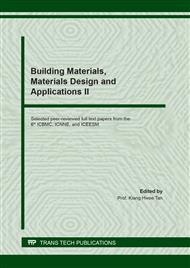p.3
p.13
p.21
p.29
p.39
p.45
p.53
p.61
p.67
3D Simulation Modeling for the Electrical Conductivity of Carbon Nanotube Networks in Polymer Nanocomposites
Abstract:
In this paper, we developed a three-dimensional percolation model to investigate the effects of the concentration and morphology of CNTs (carbon nanotubes) on the electrical conductivity of the nanocomposites. In the model, we judged the connections between CNTs by range search algorithm based on KD-Tree structure. At the same time, DIJKSTRA-Melissa algorithm was applied to efficiently find all the conductive paths instead of finding conductive network in traditional methods. From the simulation results, CNTs with higher aspect ratio were easier to form the conductive network. In a certain range of CNT’s concentration, the relationship between the conductivity of the conductive network and the carbon nanotubes was basically consistent with the classical percolation theory. To verify our simulation model, the morphological, electrical properties of Carbon nanotubes (CNTs)/poly(dimethyl siloxane) (PDMS) nanocomposites with different aspect ratio (AR) of MWNTs were systematically studied. In conclusion, these unique advantageous properties could be exploited to suggest potential applications of artificial electronic skin.
Info:
Periodical:
Pages:
39-44
Citation:
Online since:
August 2021
Authors:
Keywords:
Price:
Сopyright:
© 2021 Trans Tech Publications Ltd. All Rights Reserved
Share:
Citation:


